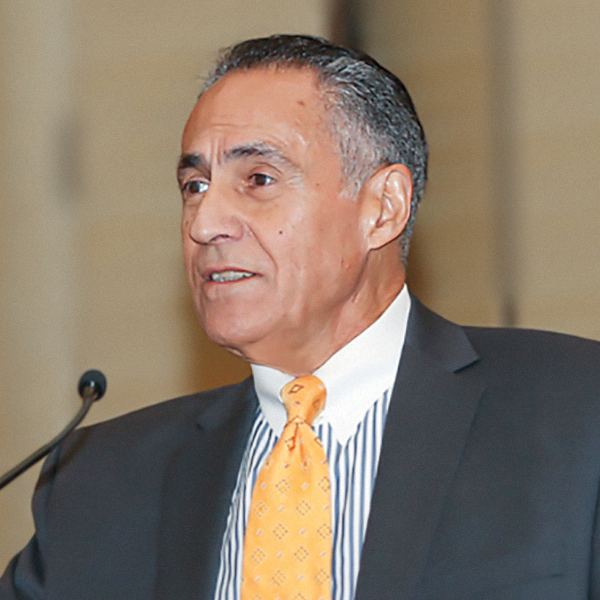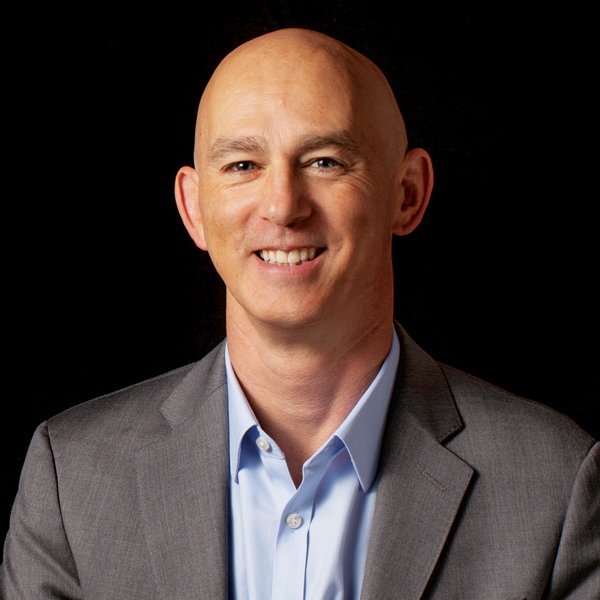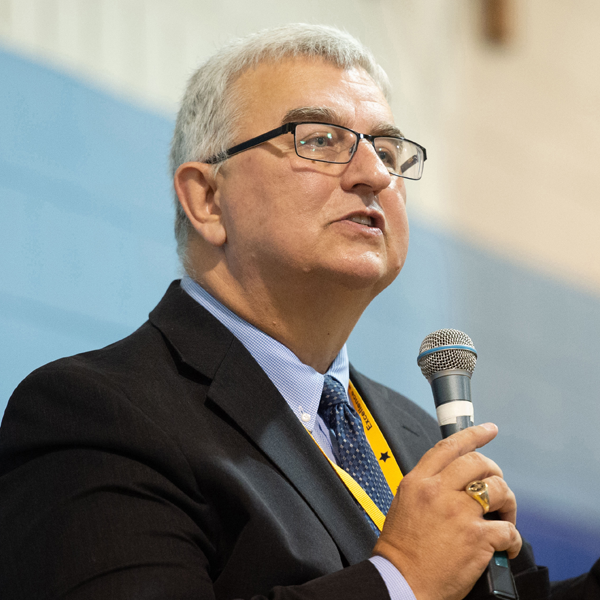 In January 2021, after five years as superintendent of schools in Montgomery County, Maryland, Jack Smith announced that he was retiring, effective June 1.
In January 2021, after five years as superintendent of schools in Montgomery County, Maryland, Jack Smith announced that he was retiring, effective June 1.
A lifelong educator—he’d been a classroom teacher, principal, and curriculum director, among other jobs—Smith will readily tell you the decision was personal. His wife was already living 600 miles away in southern Maine, helping care for a grandson who’d undergone reconstructive heart surgery as an infant. She’d planned to return to Maryland after his recovery, but Covid-19 quarantines put an end to those plans.
By December 2020, Smith, then 63, recalled, “we had been apart for more than a year and a half.” Enough was enough. The following month, he told the board he was stepping down.
Before long, Smith had plenty of company in the “outgoing superintendent” club. Superintendent churn has meant executive departures, followed by new leadership, for school districts in New York, Los Angeles, Miami-Dade, Dallas, Chicago, Boston, and elsewhere. Executive-search firms that find leaders for districts report that business is booming.
What the leadership changes will mean for students and schools is an open question. Researchers and policy watchers say that executive transitions can sometimes slow progress and shift priorities.
Smith had attracted national notice in Montgomery County for an ambitious drive to expand access to Advanced Placement and International Baccalaureate classes into the district’s poorer neighborhoods (See “Growing Advanced Placement in Montgomery County, Maryland”).Though Smith said it appears those efforts will continue, the school district itself did not respond to multiple inquiries from Education Next.
While some baseline level of superintendent turnover, especially in big-city districts, is constant, Smith’s departure and others like it are bellwethers of sorts, shifts that worry researchers and education-policy watchers: as schools emerge from the pandemic, burned-out leaders, who spent more than two years withstanding withering criticism and ever-shifting guidelines, rules, and mandates, are finally announcing they’ve had enough.
For Search Firms, Business Is Good
Top executive-search firms specializing in school superintendents say business is brisk. Michael Collins, the president of Ray and Associates, which oversees about 50 to 60 searches each year, said he’s busier than ever. “The fact of the matter is the departure from the seat of the superintendency has never been this high,” he said.
The American Association of School Administrators recently found that about 25 percent of superintendents across the country have left their jobs in the past year, a marked increase from previous years. That number is even higher in some states, such as Alaska, which AASA Executive Director Dan Domenech said is experiencing a turnover rate of about 50 percent.
“I’m getting phone calls from state executives telling me about the huge turnover of superintendents in their states,” Domenech said. “I’m getting calls from superintendents telling me they’re leaving.”
Another group, the Seattle-based National Superintendents Roundtable, released an eye-popping report about the pandemic-era struggles of its members. It carried the memorable subtitle: “Panic Attacks, Strokes, and Threats of Violence Meet Prayer, Exercise, Meditation, and Booze.” Culled from responses to a questionnaire returned by 400 district leaders, the report found that superintendents had encountered “abusive online behavior and physical threats, plus the whiplash of navigating ever-changing state and local policies” during a “coldly politicized” pandemic.
As a result, the group found, nearly two-thirds (63 percent) of respondents said they had considered quitting during the 2020–2021 school year, though 83 percent eventually decided to stay in their jobs, at least for the time being.

Other research calls into question the notion of an upward spike in superintendent departures. A RAND survey on the topic augmented the typical “Do you plan to leave?” survey with a new twist, capturing the leaders’ names atop 3,500 of the nation’s 14,000 school districts and comparing them to previous years. Researchers found turnover hovered around 13 percent, statistically on par with pre-pandemic turnover of 14 to 16 percent.
“We think that’s normal,” said RAND’s Heather Schwartz.
But she and others cautioned that the survey didn’t capture departures announced at the end of the 2021–2022 school year.
District leaders as a group are about a decade older than the teachers they lead, and many have told colleagues over the past year or so that they’d push through and shepherd their district through the pandemic, then reconsider their plans. For most leaders, Schwartz said, the end of the 2021–2022 school year meets a working definition of “through the pandemic.”
Asked about their plans in the RAND survey, half (51 percent) of superintendents said they would likely stay, while 26 percent said they’d likely leave soon. Another 24 percent were undecided.
RAND found turnover higher—17 percent—among superintendents in districts where a majority of the young people served are students of color.
Another study by the ILO Group found that the pandemic had a “disproportionate impact” on female leaders across the 500 largest public school districts in the U.S. It found that 70 percent of districts that appointed permanent replacements placed male candidates in those jobs. Of the 51 female superintendents who have left since March 2020, 76 percent were replaced by men.
“Progress to close the gender gap in the leadership of our nation’s public schools was already slow, and now it’s gotten more severe,” ILO’s Julia Rafal-Baer told The 74.
AASA’s Domenech said statistical uncertainty is actually part of the problem. “There is no reliable database that refers to superintendent turnover,” he said. The group has already petitioned the U.S. Education Department to add superintendent tenure and turnover to its longitudinal data sets.
Mike Magee, founding CEO of the reform group Chiefs for Change, said that for his group’s members and trainees, “The levels of stress are through the roof.”
Magee, who was recently named president of Minerva University, said the job of superintendent “is significantly more complex now” than even a few years ago. The additional burden of leading and managing a complex, interagency response to an emerging public-health threat is a huge challenge, he said. And the impact of “toxic levels of political polarization” creates a bigger challenge.
“A Huge Emotional Toll”
Domenech, who has served as superintendent for New York’s Deer Park and South Huntington school districts, as well as Virginia’s Fairfax County Public Schools, said these days his conversations with school leaders about career trajectories inevitably boil down to one of three categories: they’re retiring early “because they can’t take it anymore,” they’re too young to retire but are quitting “because they can’t take it anymore,” or they’re in the process of being fired by their school board.
The job, in other words, is getting more difficult to do effectively, Domenech said. And what two years of Covid lockdowns, quarantines, mask mandates, and distance learning couldn’t accomplish, more recent battles over curriculum have.
“You’ve seen the tenor of board meetings around the country,” he said. “Superintendents are being threatened; they’re being harassed. Their families are being threatened; they’re being harassed. It’s a huge emotional toll.”

In the best-case scenario, observers say, the long-term effect of all this turnover may well be a kind of renewal and refreshing of leadership, with younger and more diverse candidates stepping into the fray to lead school districts with new ideas and energy in a post-pandemic era.
“I wouldn’t frame this as a silver lining of the pandemic,” Magee said, “but I do think that as current superintendents retire, it’s critical that we have a pipeline, a diverse pipeline, of leaders up to become the next generation of superintendents and diversify the top positions in our school systems.”
But Collins, the search-firm executive, warned that what comes next might not be so attractive. While the number of openings nationwide is inching up, the number of applicants for those openings is proportionately down. Public battles between superintendents and school boards do little to help attract smart, young talent to a district, despite the politically exciting spectacle that plays out on public-access TV or Facebook.
“It drives candidates away from the openings,” Collins said. “When you have school boards that aren’t functioning in top form, candidates tell us, ‘I’m not applying there. I won’t work in that environment.’”
His advice to school boards: cut the drama. “What we tell school boards all the time is this: ‘You understand they’re interviewing you as much as you’re interviewing them.’ They watch every meeting.”
As for applicants vying for open superintendencies, Collins said nearly half “are not really qualified” to take over a school district, another big change from years past.
What it Means for Students
Research on superintendent turnover doesn’t necessarily point to negative outcomes for students. For instance, while one study found that high turnover can hamper teachers’ sharing of research-based ideas and practices districtwide, others suggest the results aren’t so clear.
An influential 2014 Brookings Institution study found that neither hiring a new superintendent nor keeping a long-serving one around longer translated into improved student achievement, at least in math and reading. While individual leaders may preside over impressive gains, the researchers found, those who have an “exceptional impact” on student achievement “cannot be reliably identified.”
Ultimately, the study found, when academic achievement in a district improves or deteriorates, the superintendent is likely to be playing just one part in an “ensemble performance.” In other words, they concluded, it’s the system, not a single district leader, that promotes or hinders student achievement. “Superintendents are largely indistinguishable,” they wrote.
Matthew Chingos, who co-led the research, recalled why the team was looking at leadership: “The motivation was, ‘You hear a lot about folks like Michelle Rhee and these hard-charging superintendents, but can you see systematically them making a difference?’ And that was where we struggled to come up with evidence that you could.”
Chingos, now at the Urban Institute, said superintendents obviously matter. “They do a lot of things, and you need those things to be done competently,” he said. “So there’s no question that it’s important who the superintendent is, that they not be bad at their job.”
And emerging data may offer a new look at how much leaders matter.
Chingos noted that shortly before the study on superintendents, the Brookings team authored a 2013 study that looked at the effect of districts. It found that the school a child attended mattered much more than which district it was in. But more recent data from Urban Institute researchers working in North Carolina found that, in the throes of the pandemic, districts have actually begun to matter more.
“The pandemic obviously changed a lot of things,” Chingos said. Perhaps, he speculated, it has made superintendents matter more, as well?
Jeffrey Young, a longtime educator who directs the Urban Education Leaders Program at Columbia University’s Teachers College, said steady leadership is important, mostly because it gives educators in a district a sense that they’re striving toward long-term goals. When superintendents change, he said, it has an effect not just on programs, but on attitudes.
“Organizationally, when there is a change at the top, everything else changes in relation to that,” said Young, who previously served 27 years as a superintendent in several Massachusetts school districts.
One superintendent might prioritize a goal such as early literacy, while the next might decide that middle school matters. “If you’re really talking about change—a change in values, a change in attitudes, a change in belief systems, a change in techniques of pedagogy, of the curriculum—that takes time,” Young said.
Too many leadership changes drive teachers and others in a district to a baseline belief that priorities don’t matter, he said. “Teachers tend to stay longer in a district than a superintendent does, so it’s not hard for them to say, ‘We’ll just wait this out. By the time we get around to having to worry about it, this guy will be gone. And there’ll be someone new here again.’ And you know what? They are right.”
Jeffrey Henig, who directs Teachers College’s Politics and Education program, said good superintendents are attuned to both the educational and political environments of a district. When these leaders leave the district, he said, “There’s a pretty good chance that they’re going to get another good superintendent” because the departing leader has, in a sense, put the building blocks in place for another strong leader. So these districts experience little impact.
Actually, the dynamic is similar in districts where the superintendent is doing a lousy job tending to the educational or political environments. “If that superintendent leaves, it’s not going to make any difference anyway, because it’s ‘chaos to chaos,’” Henig said.
The real danger of superintendent turnover is in cases where the incumbent’s performance is somewhere in the middle, he said.
“You’ve got a superintendent who may be doing a really good job of keeping the organization focused but doesn’t have a strong supportive political infrastructure, isn’t enmeshed in a sort of coherent political, civic life. When that superintendent leaves, that opens a possibility for real dysfunctional change in transition,” Henig said.
School boards in these districts “may willy-nilly go for a totally different kind of superintendent,” he said. “There may be cleavages within the school board that make it hard to recruit a good superintendent. So it’s these middle districts, the districts where the superintendents are kind of holding that operation together, that are vulnerable to negative consequences when a superintendent leaves.”
Henig also pointed out that the vast majority of school districts “are pretty much chugging along under the radar screen” with little national visibility, little foundation funding, and little attention from interest groups on the left or right. “And many of those [districts] have stable superintendents who stay for a long time and then are replaced by someone who moved up within the system,” Henig said.
But recent events indicate that may be changing, with “nationalized” political turmoil rearing its head even in formerly quiet, small districts.
Henig said the reality of the moment may require rethinking how superintendents are trained and how they perceive their jobs.
“There is sort of a tradition in training school leaders that presents this as a position where your goal is to keep politics at bay and focus on the organization and keep your head down,” Henig said.
That may suffice in places where the politics are “totally chaotic and unpredictable,” he said. But elsewhere, we may need superintendents with a measure of political savvy.
That might not mean publishing op-eds in The Washington Post, he said. “But it means understanding how to build coalitions, which issues to take a hold of, which issues to sort of sidestep.”
In the end, Henig said, the long-term success of a superintendent “involves this relationship to the broader political community, not just whether they’re running a tight ship.”
“This Isn’t the New York Yankees”
As for Smith, the now-retired Mont-gomery County superintendent had been running the nation’s 14th-largest school district, with more than 160,000 students. He had planned to stick around for eight years or so—the previous January, Montgomery County’s school board had voted unanimously to renew his contract for another four years, putting him on a path to remain through June 2024.
“But you know, this is just how life happens,” he said in an interview.
In nearly the same breath, however, Smith said, in so many words, that the decision was easy. The last year-and-a-half or so of his superintendency, from March 2020 until his retirement in June 2021, was “among the most challenging of my 41 years in education—by far.”
He summed up the reaction to Covid—from educators, lawmakers, community leaders, unions, health officials, and parents—in a three-word phrase that says it all: “Too much noise.”

In his retirement, he has been reunited with his wife. They live a quiet life in Standish, Maine. Their grandson is recovering nicely. Looking back over the past two years, Smith said virtually everyone with hands on schools—superintendents, boards, unions, local and state leaders, health authorities, and even the federal government—misjudged the Covid crisis.
“The governors and the state superintendents were quick to shut down schools,” he said, “but then they didn’t open schools.”
Teachers unions, for their part, came off as out-of-touch when talking about the dangers Covid posed to educators. He recalled emails from teachers afraid to re-enter buildings during the pandemic, one of which told him, “My blood will be on your hands.”
“I heard it over and over and over,” Smith said. “Well, that was really tone-deaf to the police departments, the people who worked in the food industries, the people who kept the school moving, the people in the Post Office, the people who kept all of the essential services, all the medical people, moving. Because then they would write to me and say, ‘How dare you keep the schools closed for your staff when we’re out here on the front lines?’ That just was really, truly a disaster for superintendents across the country trying to navigate that.”
School boards flip-flopped on masking, and the federal government, under both presidents Trump and Biden, sowed confusion with constantly shifting guidelines.
This year, as Collins’ search firm watches leader after leader step down and make way for new superintendents, it is focusing on what he calls “candidate care.” And he’s suggesting to districts that they consider more robust ways of “growing their own” leaders, perhaps even contemplating a kind of farm system that nurtures teachers and principals over several years as they learn leadership skills. “This isn’t the New York Yankees, where you can go buy it,” he said.
Such a system would explicitly focus educators on being prepared for the critical decisions that they’d have to make in leadership positions. “We never used to ask those questions,” Collins said, but the pandemic has forced that conversation. “Stakes are higher. The challenges are greater. And the media and public scrutiny is everywhere.”
Greg Toppo is the author of The Game Believes in You: How Digital Play Can Make Our Kids Smarter (St. Martin’s Press, 2015) and a journalist with nearly 25 years of experience, most of it covering education. He is co-author of Running with Robots: The American High School’s Third Century, about automation, artificial intelligence, and the future of high school (MIT Press, 2021).
This article appeared in the Winter 2023 issue of Education Next. Suggested citation format:
Toppo, G. (2023). School Superintendents Head for the Exits: In big districts, brand-new leaders fill vacancies. Education Next, 23(1), 28-34.


